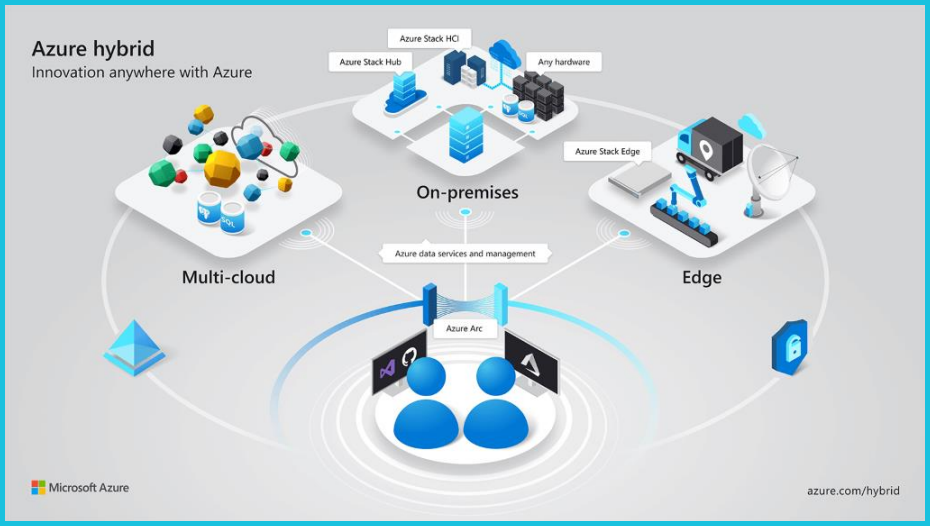What is Azure Arc?

Most companies are using the cloud in some fashion, whether they’re leveraging Microsoft 365, AWS FSx, or Azure Backup, regardless of size and scale, while still maintaining there on-premises footprint. This hybrid approach allows companies to utilize their on-prem environment while still being able to leverage cloud technologies. More often then not, they have a presence with more than one cloud service provider, adding to their management complexity as well as need for diverse technical skillset inventory. We can simplify this problem today. What if we could leverage the cloud innovations and apply those services anywhere, regardless of the environment or platform with a single set of technologies? Enter Azure Arc.
What is Azure Arc?
Server management
Simply put, Azure Arc provides you with the opportunity to run Azure services anywhere. There has already been a move in this direction with several of Azure’s services. For example, Azure Security Center provides the opportunity to monitor and protect our on-prem workloads, both physical and virtual, Windows and Linux. Azure Arc has upped the “anty” by extending more Azure management services to manage your workloads regardless of where they live, providing a consistent approach across diverse environments.
These capabilities include Azure Resource Manager, Azure Shell, Azure Portal, API as well as Azure Policy. On top of those services, Azure Arc has made it easier to secure your assets across hybrid environments through the use of role-based access control (RBAC) and security policies (think Azure Security Center).
Managing Data Services
Arc also extends to your data needs as well. It provides the ability to deploy Azure SQL databases and others where you want it. It provides a consistent interface to view all Azure data services across all platforms and environments while managing security and governance everywhere.
Think of having the ability to scale out your on-prem Kubernetes clusters to Azure Kubernetes Service (AKS) as needed. This truly changes the game as it relates to hybrid data management. You can learn more about Azure Data services here.
What’s in it for me?
I think anyone can find a true use case for Arc. Whether you’re a solutions architect, database administrator, or a cloud engineer. This appears to be a one-stop shop for managing your enterprise hybrid environment regardless which cloud service providers we are leveraging.
Essentially, providing us with Azure services right out of the box to use anywhere. I know there have been times when I dreamed of having some of the capabilities such as Azure Policy on-prem as we do in Azure. Sure, there are things I can do locally right now that are similar to Azure Policy, but at some cost and I may or may not have that skill-set on board.
Now we do, without having to bolt on this component or that feature. I will be extremely interested to see how far they extend Azure Arc as it matures beyond general availability. It’s already loaded with some extremely useful services right now. Now all that’s left to do is learn how to manage Windows and Linux servers using Azure Arc.
Summary
So that’s it in a brief nutshell. If you’re anything like me, you can’t wait to kick the tires and see how it works cross platform as well as on-premises. I’m interested to see how the management side of Azure Arc works with my on-premises environment. My primary native tools for managing in the cloud have been what most of us use, the portal, PowerShell as well as Azure CLI.
Related Articles:



